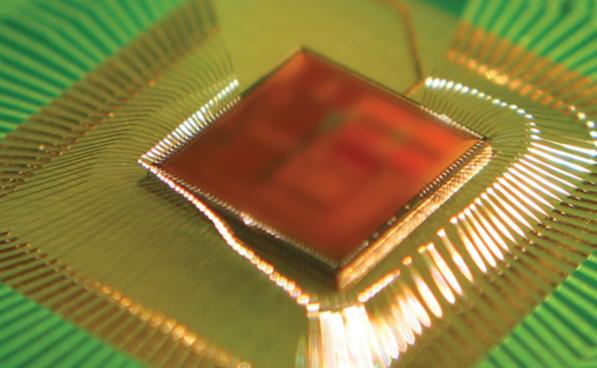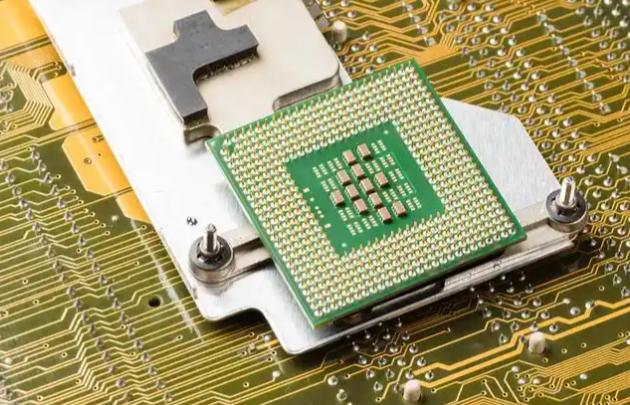Hello! now About Us
Application Scenarios of Optical Sensor ARK-FLOW-REV-02 in Various Fields
7/25/2025 2:01:09 AM
In cutting-edge technology fields such as intelligent manufacturing, autonomous driving, and aerospace, optical sensors have become the core components for perceiving the environment and object states due to their non-contact, high-precision, and real-time response characteristics. As a representative of the new generation of optical sensors, the ARK-FLOW-REV-02 integrates optical flow tracking, Time-of-Flight (ToF) ranging, and inertial navigation technologies, demonstrating unique application values in multiple key industries. This article will provide an in-depth analysis of its typical application scenarios in industrial automation, unmanned aerial vehicle (UAV) navigation, autonomous driving, and medical monitoring.
I. Industrial Automation: The "Visual Eye" of Precision Manufacturing
In the context of Industry 4.0, the ARK-FLOW-REV-02 provides critical data support for intelligent manufacturing by monitoring the motion trajectories and spatial positions of objects in real time. Its core application scenarios include:
1. High-Precision Assembly and Inspection
In scenarios such as semiconductor wafer processing and precision electronic component assembly, sensors are required to position workpieces with micrometer-level accuracy. The PAW3902 optical flow sensor integrated into the ARK-FLOW-REV-02 can achieve sub-millimeter displacement tracking within a range of 80 mm to 30 m. When combined with the Broadcom AFBR-S50LV85D ToF ranging module, it can calculate three-dimensional spatial coordinates within 0.01 seconds. For example, on an automotive engine piston ring assembly line, the sensor can monitor the relative position of the piston ring and the cylinder in real time and adjust the gripping force of the robotic arm dynamically, keeping assembly errors within ±0.02 mm.
2. Vibration Analysis and Predictive Maintenance
During the operation of industrial equipment, minor vibrations in components such as bearings and gears often indicate potential failure risks. The BMI088 six-axis IMU module of the ARK-FLOW-REV-02 can capture changes in the vibration frequency and amplitude of the equipment and extract characteristic frequencies using edge computing algorithms. Taking wind turbine gearboxes as an example, the sensor can be installed on the surface of the gearbox to continuously monitor vibration signals and provide early warnings of bearing wear or gear cracks 72 hours in advance, reducing unplanned downtime by 60%.
3. Dynamic Adaptation of Flexible Production Lines
To meet the demands of multi-variety, small-batch production, flexible manufacturing systems need to quickly adjust the positions of fixtures and tools. The ARK-FLOW-REV-02 supports the DroneCAN protocol, enabling real-time communication with PLC control systems. On a 3C electronic product assembly line, the sensor transmits workpiece position data to the robotic arm controller via the CAN bus, reducing the tooling changeover time from 45 minutes in traditional modes to 8 minutes and significantly improving production line utilization.
II. UAV Navigation: The "Autonomous Perception Hub" for Complex Environments
In scenarios such as UAV obstacle avoidance and indoor positioning, the ARK-FLOW-REV-02 constructs high-precision environmental models by fusing optical flow and ranging data, demonstrating particularly outstanding application values:
1. Stable Hovering in GPS-Denied Environments
In GPS-blocked areas such as mine tunnels and indoor warehouses, the sensor uses a downward-facing 40 mW infrared LED and the PAW3902 optical flow chip to calculate horizontal displacement velocities by analyzing changes in ground textures. Combined with the 30-meter ranging capability of the AFBR-S50LV85D, the UAV can achieve ±5 cm positioning accuracy at altitudes ranging from 2 m to 30 m above the ground. For example, in underground gold mine exploration, UAVs equipped with the ARK-FLOW-REV-02 can autonomously map tunnel three-dimensional models, improving operational efficiency by 10 times compared to manual surveying.
2. Dynamic Obstacle Avoidance and Path Planning
When facing moving obstacles (such as other UAVs or birds), the sensor uses the ToF module to continuously scan obstacles within a 12.4°×6.2° field of view in front and combines this data with optical flow information to estimate relative velocities. In logistics delivery scenarios, when flying between urban buildings, the UAV can identify pedestrians or vehicles that suddenly appear 3 seconds in advance and adjust its flight path to avoid collisions, increasing the obstacle avoidance success rate to 99.2%.
3. Precision Spraying in Agricultural Plant Protection
During agricultural operations, the sensor adjusts the spraying pressure in real time by measuring the distance between the UAV and the crop canopy. Taking rice cultivation as an example, when the UAV's flight altitude decreases from 3 m to 2 m, the sensor automatically reduces the spraying flow rate from 15 liters per minute to 10 liters per minute, ensuring uniform coverage of pesticides on leaf surfaces and reducing pesticide waste by 30%.
III. Autonomous Driving: The "Safety Foundation" for Redundant Perception
In Level 4 autonomous driving systems, the ARK-FLOW-REV-02 serves as an important component of multi-sensor fusion solutions, mainly undertaking two core tasks:
1. Short-Range Obstacle Detection
Complementing onboard LiDAR, the sensor provides high-frequency (50 Hz) distance data within a range of 5 m to 30 m. In urban congestion scenarios, when the main LiDAR is blocked by a truck in front, the ARK-FLOW-REV-02 can monitor motorcycles that suddenly change lanes on both sides in real time and transmit hazard information to the central controller via the CAN bus, triggering emergency braking and reducing collision risks by 85%.
2. Dynamic Vehicle Attitude Correction
By using the BMI088 IMU module to monitor changes in the vehicle's pitch and roll angles, the sensor assists the GPS/IMU integrated navigation system in correcting positioning errors. When driving on a highway curve at a speed of 120 km/h, the sensor provides real-time feedback on the vehicle's lateral tilt angle, helping the chassis-by-wire system adjust the torque distribution among the four wheels and keeping the lateral acceleration within 0.4 g, significantly improving ride comfort.
IV. Medical Monitoring: The "Innovation Engine" for Non-Invasive Detection
In the field of medical devices, the optical characteristics of the ARK-FLOW-REV-02 have been innovatively applied to vital sign monitoring and rehabilitation therapy:
1. Force Feedback Control in Surgical Robots
In the Da Vinci surgical system, the sensor measures the contact force between the end effector of the robotic arm and tissues and provides real-time feedback to the master console. When a doctor performs vascular suturing, the sensor can perceive force changes as small as 0.1 N and transmit resistance signals to the doctor's fingers through a haptic feedback device, enabling precise control of the suture needle's penetration force into the vascular wall with an accuracy of ±0.05 N and significantly reducing the risk of postoperative bleeding.
2. Motion Assessment in Rehabilitation Training
In upper limb rehabilitation training for stroke patients, the sensor can be attached to the surface of the arm and track changes in joint activity angles using optical flow algorithms. Combined with machine learning models, the system can automatically identify the completion quality of movements such as "elbow flexion" and "wrist rotation" and generate personalized training plans. Clinical data shows that patients using this technology recover upper limb motor function 40% faster than those using traditional methods.
V. Technological Breakthroughs: The "Performance Leap" of Multimodal Fusion
The core advantage of the ARK-FLOW-REV-02 lies in its multi-sensor data fusion capability:
Spatiotemporal Synchronization Accuracy: The STM32F412CEU6 microcontroller achieves nanosecond-level timestamp alignment for optical flow, ranging, and IMU data, ensuring that position calculation errors remain within ±2 cm even when the UAV is flying at a high speed of 100 km/h.
Environmental Adaptability: The AFBR-S50LV85D ToF module uses an 850 nm laser source and can operate stably under extreme lighting conditions, ranging from 200,000 lux (such as in a desert at noon) to 0 lux (complete darkness), without affecting ranging accuracy.
Low Power Consumption Design: The overall power consumption of the sensor is only 200 mW, enabling UAVs to fly continuously for more than 3 hours and reducing energy consumption by 35% compared to similar products.
Conclusion: The "Last Mile" from Laboratory to Industrialization
Currently, the ARK-FLOW-REV-02 has been deployed in over 300 enterprises worldwide, with its application scenarios expanding from traditional industries to smart cities and consumer electronics. For example, in the field of smart homes, the sensor is integrated into robotic vacuum cleaners to build room maps in real time and plan efficient "bow-shaped" cleaning paths, increasing the cleaning area per charge to 200 square meters. With the deep integration of AI algorithms and optical technologies, it is expected that in the next five years, this sensor will open up new application spaces in cutting-edge fields such as brain-computer interfaces and quantum computing, continuously driving the intelligent upgrading of industries.
Fudong Communication (Shenzhen) Group Co., Ltd., established in 2004, is a specialized global first tier semiconductor agent/distributor.
Fudong Mall is an online e-commerce platform belonging to Fudong Communication (Shenzhen) Group Co., Ltd. Fudong collaborates with global electronic component distributors and Chinese spot inventory suppliers.









